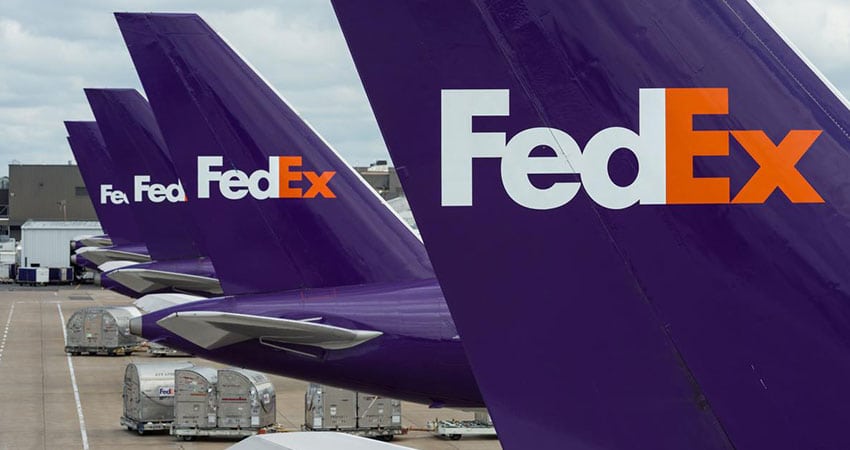FedEx provided details on its plan to consolidate its Ground, Express and Service units by 2024, announced last year, with its less-than-truckload Freight unit remaining separate, projecting cost savings of $4 billion by 2025 and an additional $2 billion in network efficiencies by 2027.
The consolidation will cost an estimated $2 billion and take several years to complete, while the units will be combined on paper by June 2024, FedEx said at an investor event this week in New York.
The move, undoing a big piece of FedEx founder Fred Smith’s legacy, brought universal praise from industry analysts and observers. They said the move was a necessity for its long-term survival given the competitive climate, especially with UPS, and an economically challenged ecommerce logistics market with lower volumes.
Shippers will benefit from a single FedEx pickup, a sticking point for years and an advantage that UPS reps often use when touting its “power of one” single-network structure. There was general agreement that the integration timeframe was doable, although some were concerned about the execution.
Consultants say shipper clients tell them FedEx reps have been using contract negotiations between UPS and the Teamsters union as a carrot to lure over shippers leery of a potential shutdown if there is no settlement by July 31. Shippers are being told in the event of a strike, FedEx will of course prioritize existing clients. Fiery Teamsters president Sean O’Brien has repeatedly threatened a crippling walkout the next day if a deal isn’t in place, which last took place in 1997. UPS CEO Carol Tome remains confident one will be reached.
“We are building a simplified experience for our customers, who are at the center of everything we do, so they can adapt to the market,” said Raj Subramaniam, president and CEO of FedEx in a release. “This combination will allow us to provide customers with even greater value, offering the most advanced data-driven insights to help them make smarter decisions for their business.”
In the new structure, John Smith will become president and CEO of Ground operations in the U.S. and Canada, overseeing surface operations across Express, Ground and Freight. Richard Smith, son of the founder, will serve as president and CEO of Airline and International, overseeing all other regions and FedEx Logistics.
Satish Jindel, founder and president of Shipmatrix, said the consolidation plan will see FedEx nearly double its use of intermodal rail for freight transportation, from 8% to 15%, which is 36% cheaper than trucking. The company will also institute four-hour delivery windows, which Jindel believes will improve to two hours in the near future, a benefit for shippers and end customers.
“For me the most important thing is, it’s not just theoretical numbers,” Jindel said. “There are details behind it that helps you understand where the costs are coming out and from what components. It should build confidence in the investment community and with others that they have a plan and it’s executable.”
“This is a massive undertaking for FedEx, but one that is required to be competitive,” said Nate Skiver, founder of consultancy LPF Spend Management, on his LinkedIn. “I’ll be interested to see how they balance service and profitability over the next few years while combining Ground and Express networks and completing a corporate structure reorganization.”
Thomas Andersen, a partner and EVP of supply chain services for LJM Group, said pickup and delivery densities will improve and processes will be streamlined, helping drive better per-piece economics for FedEx.
“The concern is that Express service performance may suffer, especially initially, but the most significant impact should be at the first and last-mile levels, where utilizing a single pickup and delivery will be beneficial,” Andersen said.
Dean Maciuba, Managing Partner USA for Crossroads Parcel Consulting, said shippers could benefit if the efficiencies gained lead to more competitive pricing against UPS, but he didn’t think it would result in any substantial business gains for FedEx. “This is all about reducing cost, driving improved margins and increasing the share price,” Maciuba said.
Integration challenges include merging the employee and contractor models of Express and Ground, and raising the service capabilities of Ground delivery.
“Maintaining morale on the Express side during the transition could also be an issue, as drivers face change, possible lower wages and loss of jobs,” Maciuba said. “To realize the cost reduction objectives, the higher-cost Express employee model must shrink or go away, and most or all pickup and delivery operations must be shifted over to the lower-cost contractor model.”
Adi Karamcheti, a senior consultant in professional services for Shipware, said the main objection he got as a FedEx rep was to the “two pickups” model of Ground and Express, a UPS plus that goes away.
“With more Express than Ground trucks, and since the Ground drivers are contractors, Ground pickups were almost always earlier than clients wanted,” Karamcheti said. “There has always been confusion around dropping packages off, too. It is generally much easier to drop off an Express package at an Express station than dropping a ground package off at a Ground terminal.”
He did wonder how the integration will work from an operational perspective, as Express stations tend to be near airports, with Ground hubs often further out.
“How do they handle this from a labor perspective, especially with their Ground contractors?” Karamcheti asked. “Do they pay per Express piece? Do they combine next-day Ground shipments with local next-day Express shipments?”
John Haber, chief strategy officer at Transportation Insight, agreed the move was long overdue but wondered if there would be a unionization push under the new structure. Express pilots are the only employee group that is unionized at FedEx.
“There is a cost savings, assuming they remain non-union,” said Haber, who used to work in strategy for UPS. “But what happens if they can’t? That’s where things get interesting. People have been trying to unionize FedEx for a long time. That’s something I’ll be watching for.”

